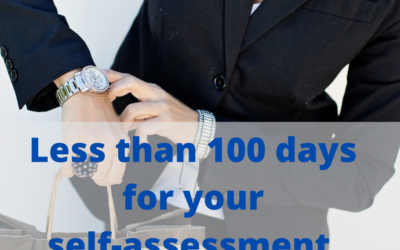VAT – Flat Rate Scheme
What is it?
VAT is calculated as a difference between VAT from sales (output VAT) and VAT from purchases (input VAT). Sometimes a person has a refund of VAT, but many times owes Vat to HMRC.
Flat Rate Scheme is a set % of VAT that has to be paid to HMRC, without deducting VAT from purchases. However there are different rates of VAT, depending on the industry you operate within; details can be found on HMRC website.
In this blog let’s assume that we are talking about the couriers, Flat Rate Scheme for his industry is 10%, above all it is a nice, round number.
It means that if the courier is registered for Flat Rate Scheme, he or she pays 10% VAT instead of calculating difference between output and input VAT.
General rules around Flat Rate Scheme.
You must apply to HMRC to register for Flat rate Scheme.
You cannot just decide you are changing your scheme; you have to work out:
- Your cost must be at least 2% of your turnover,
- The cost must be at least £1000 a year (if the costs are more than 2%),
- Your total sales, including VAT, in the next have to be lower that £150,000.
If your business does not fulfil those requirements your Flat Rate Scheme is automatically as 16.5%
Advantages of Flat Rate Scheme
- Accountancy is much easier, in other words, there is no need to calculate difference between output and input VAT,
- You can save money, however it was not the main reason this scheme was created,
- For the first year you have 1% discount (so if you a courier you pay 9% instead of 10%) – similarly the same applies if you have standard VAT scheme,
- Peace of mind, less probability to make a mistake,
- You don’t have to ask for VAT receipt, you have to remember that in order to deduct VAT is has to be on the receipt, unless receipt is less than £250, but even then receipt has to have VAT number,
- Clarity – you always know how much VAT you have to pay.
You have to remember that each business is different and not always Flat Rate Scheme is the best – eg if you make zero VAT sale.
How much VAT
Despite common opinion VAT due is not calculated on basis id VAT charged (output VAT)
Flat Rate Scheme means that VAT is calculated on total amount of sale, including VAT.
Example:
- Courier issues invoice for £1000
- VAT added is £200 (20% on £1000)
- Total amount on invoice is £1200.00
- Flat Rate Scheme is 10%
- VAT due to HMRC is 10% of £1200 – £120
Tax return
One more thing person has to remember. During your self-assessment tax return on return for your company you have to include VAT surplus, in above example £80, as your income. You have to declare it and pay tax on it.
Need help?
Need an accountant? Call me now!
Similar articles:
CIS – what is it, what for and what to do with it?
CIS (Construction Industry Scheme) is a tax deducted by the contractor from the subcontractor's salary and transferred to HMRC. In other words, it is a tax that must be declared during self-assessment tax return and usually the overpaid amount is refunded....
Grant increase for self-employed
We are in the quarantine again! Thankfully the government took under the consideration situation of self-employed people and decided to increase the grant. Increase is from 55% to 80%. It is for two periods: November 2020-January 2021 February 2021 – April 2021 The...
Deadline to submit your tax return to HMRC is near
Deadline for self-assessment tax return (SATR) for the year 2019-2020 is 31 January 2021. Anyone who is self-employed, regardless of making profit or a loss, has to submit SATR to HMRC. Penalties if you don’t submit your return on time: From 01 February (even 1 day...




